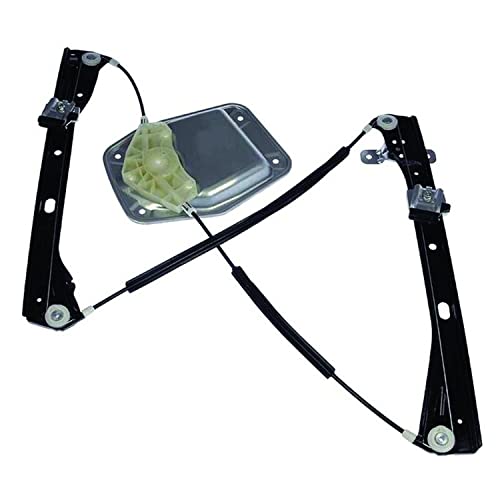I have yet to find a definitive reference for the United Kingdom, but I am aware that in Australia, there are restrictions regarding DIY changes in a vehicle’s wheel-track (i.e. distance between ground-level tyre-tread centres of opposite wheels on the same axle) from the factory-standard specification, owing to suspension modifications and/or substitution of wheels having a different wheel-offset. There, the wheel-track must
NOT be decreased at all, but may be increased by a maximum of 25 mm.
Many years ago, I recall reading some material in the United Kingdom, which stated that if a vehicle’s wheel-track was altered by more than 20 mm, this would result in one’s motor insurance policy being declared null & void! This is something which it would be advisable to clarify with one’s insurers.
According to the official Volkswagen owner’s handbook for my 1973 model-year [manufactured in late-August or early-September 1972] VW 1600 Type 2 Westfalia Continental motor-caravan (based upon a Kombi Type 23-517], the front & rear wheel-track are
1395 mm &
1455 mm for the front & rear respectively. My various Haynes and Robert Bentley workshop manuals, suggest that the wheel-track specifications for 1968~70 & 1971~72 VW Type 2s might be slightly different.
J. H. Haynes & D. H. Stead, “VW Transporter 1600 Owner’s Workshop Manual – All Transporter based models 1968 to 1972 – 1584 cc (96•7 cu. in)”, J. H. Haynes and Company Limited, 1974, ISBN 0-900550-82-1.
Front wheel-track [with drum brakes] = 1384 mm
Front wheel-track [with disc brakes] = 1386 mm
Rear wheel-track = 1426 mm
J. H. Haynes & K. F. Kinchin, “VW Transporter 1700/1800 Owner’s Workshop Manual – All Transporter based models 1972 to 1974 – 1679 cc (103 cu. in) & 1795 cc (110 cu. in)”, J. H. Haynes and Company Limited, 1975, ISBN 85696-226-0.
Front wheel-track = 1395 mm
Rear wheel-track = not specified
Volkswagen of America, “Volkswagen Official Service Manual Type 2 – Station Wagon / Bus 1968~1979”, 4th Edition, 1979, Robert Bentley Publishers, ISBN 0-8376-0094-4.
Front wheel-track = 1395 mm
Rear wheel-track = not specified
I previously mentioned the need to comply with what I described as the “Motor-Vehicle Construction & Use Regulations”, which would be invoked in any legal prosecutions. Anyone involved in modifying vehicles from the factory-standard specifications, would be well advised to properly acquaint themselves with the various appropriate regulations (e.g. Road Vehicles Lighting Regulations 1989 and later amendments), at least some of which should be listed in your current, up-to-date copy of the Highway Code, that can now be accessed on-line.
https://www.gov.uk/guidance/the-highway-code
http://www.highwaycodeuk.co.uk/
The Road Vehicles Lighting Regulations 1989, UK Statutory Instruments 1989, No. 1796
http://www.legislation.gov.uk/uksi/1989/1796/contents/made
The fact of having been issued with an MOT Pass Certificate, does not indicate compliance with the various regulations, because this is not a part of the MOT Inspector’s remit. It is you as the owner, not an MOT Inspector, who is responsible for ensuring that your vehicle complies with these regulations, for which a Voluntary IVA Inspection might appropriate!
https://www.gov.uk/transport/vehicle-manufacturing-and-modification
https://www.gov.uk/vehicle-approval
The 1968~79 VW Type 2 effectively has “plated weights” by virtue of the fact that behind the right-hand front seat (or possibly elsewhere) there is or should be, an embossed aluminium identification plate, riveted to the bodywork, giving details in German, of the vehicle-type number, chassis number, exhaust heat-exchanger reference and
front & rear axles’ maximum load limits, which dependent upon vehicle model (e.g. Kombi or Microbus etc) are typically
1010 kg for the front (i.e. vorn in German) and
1270 kg for the rear (i.e. hinten in German)), so under the provisions of The Road Vehicles (Construction and Use) Regulations 1986, any tyres fitted to the vehicle must be capable of supporting those maximum axle weights, at the appropriate tyre inflation pressures; irrespective of the loads that are actually carried by that vehicle when in service.
The Road Vehicles (Construction and Use) Regulations 1986
http://www.legislation.gov.uk/uksi/1986/1078/contents/made
UK Statutory Instruments1986, No. 1078, PART IIC
http://www.legislation.gov.uk/uksi/1986/1078/part/II/chapter/C/made
Tyre Loads and Speed Ratings
25.—(1) This regulation applies—
(a) to a goods vehicle first used before 1st April 1987 in respect of which a plating certificate has been issued;
(2) Each axle of a vehicle to which this regulation applies solely by virtue of paragraph 1(a)
shall be equipped with tyres which, as respects strength, are designed and maintained adequately to support the maximum axle weight for that axle.
Condition and maintenance of tyres
27.—(1) Save as provided in paragraphs (2), (3) and (4), a wheeled motor vehicle or trailer a wheel of which is fitted with a pneumatic tyre shall not be used on a road, if—
the tyre is unsuitable having regard to the use to which the motor vehicle or trailer is being put or to the types of tyres fitted to its other wheels;





































